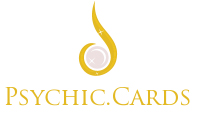Browse any spiritual shop, and the array of card decks options can boggle your mind. However, it can be difficult to understand the differences once such a distinction is between oracle and tarot cards. Tarot cards have a clear structure with major and minor arcana. Therefore, readers require ample knowledge to harness the full potential of their deck.
Oracle cards have far less structure, which allows for more intuitive interpretations. This allows for more readers to convey guidance to querents. Oracle cards can show patterns and connect with beings like spirit guides, ancestors, or higher self. They can be used to help focus or provide affirmation. Depending on your interests and goals, you get back what you put into the cards.
Seven steps to reading oracle cards
- Discover your deck: There are many oracle decks created, and you need to find the deck that speaks most to you. The closer aligned you are to your deck, the more successful your readings will be. When you go to a store, browse the images. If possible, read the text included on the cards, and feel them. Then, buy the deck you are most drawn towards.
- Meet your deck: After buying your deck, spend some time with it before your first reading. Absorb the booklet included in most decks. Take time to analyze each card. Consider the images, text, and insights you get when you hold it. Familiarity will lead to success.
- Carefully choose your time and environment: Reading when you feel calm and have ample time is important. Create a peaceful environment with candlelight, pleasing music, and maybe burning some incense. Have a ritual for your card use, and allow it to be a time to connect with yourself fully. Make this time feel restorative and like a treat.
- Set an intention, and mindfully choose your question(s) and spread: Intentions are essential to any reading. Are you looking for information or inspiration? Perhaps you need more focus in your life. Set a question that helps facilitate growth, but remembers the future is yours to create. Try to avoid questions like “Will I find love?” or “get my dream job?” Your answer may be confusing as your true answer depends on aspects you manifest every day and depends on your daily decisions. Instead, opt for open-ended questions on things you need to improve upon or pay closer attention to. The spread you select should correlate with your question. Common spread is 1 or 3 card picks.
- Shuffle and pick: You can shuffle in any way that speaks most to you. Repeat your question in your mind. At times cards might “jump” from the deck. If there are one or two cards, place them aside and interpret them with the cards you actively select. When you feel the cards are shuffled well, pick as many cards as required for the spread. Take a deep breath and select the cards that pull you to them.
- Interpretations: Observe and analyze the cards as you lay them down in the spread. Notice your thoughts, and write them down if necessary. You can refer back to your booklet if you need more clarification on your insights and intuition. Pay attention to any similarities in the messages if multiple cards were selected. It is important to remember that there are differences between upward and downward turned cards. Upwards (turns towards you) supports the messages, whereas downwards (turns away from you) negates the message.
- Give gratitude to the cards: After you receive your message and wrap up the reading, pause to thank the cards. Give the cards and yourself ample gratitude for taking the time to give you vital guidance on your pressing issue.
Have fun getting to know your oracle deck and doing readings. The insight provided may be life changing for some.


The step-by-step guide on how to read oracle cards is quite comprehensive. It offers practical advice for both beginners and experienced readers.
The idea of giving gratitude to the cards is interesting. It highlights the importance of respecting the tool used for spiritual guidance.
The distinction between tarot and oracle cards is well explained. It’s clear that each has its unique benefits and requires different levels of commitment.
The advice to avoid closed-ended questions is prudent. Open-ended questions can lead to more meaningful and actionable insights.
I appreciate the emphasis on creating a peaceful environment for readings. The ambiance can indeed affect the quality of the insights received.